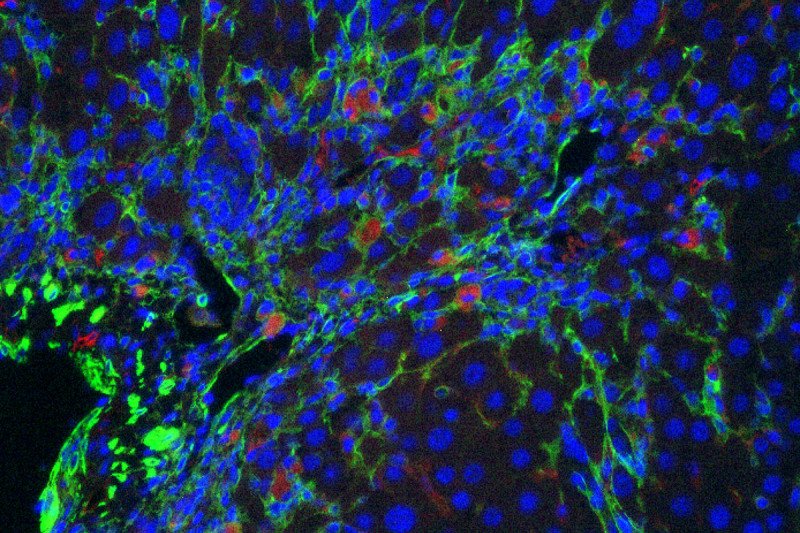
Chimeric antigen receptor (CAR) T cells have transformed the treatment of refractory blood cancers. These genetically engineered immune cells seek out and destroy cancer cells with precision. Now, scientists at Memorial Sloan Kettering are deploying them against other diseases, including those caused by senescence, a chronic “alarm state” in tissues. The scope of such ailments is vast and includes such debilitating conditions as fibrotic liver disease, atherosclerosis, and diabetes.
Key to the success of CAR T cell therapy has been finding a good target. The first US Food and Drug Administration-approved CAR T cells target a molecule on the surface of blood cancers called CD19. It is present on cancer cells but few other normal cells, so side effects are limited.
Taking their cue from this prior work, a team of investigators at MSK including Scott Lowe, Chair of the Cancer Biology and Genetics Program in the Sloan Kettering Institute, and Michel Sadelain, Director of the Center for Cell Engineering, along with their trainees Corina Amor, Judith Feucht, and Josef Leibold, sought to identify an appropriate target on senescent cells. These cells no longer divide, but they actively send “help me” signals to the immune system. Over time, this can cause serious trouble.
“Senescence is a double-edge sword,” says Dr. Lowe, a co-responding author on a new paper published June 17 in Nature. “Cells in this state play an important role in wound healing and cancer deterrence. But if they linger for too long, they can cause chronic inflammation, which itself is a cause of many diseases. Finding a way to safely eliminate these cells would be a major therapeutic breakthrough in the treatment of these diseases.”
By comparing molecules on the surface of senescent cells to other cell types, the MSK scientists were able to identify a molecule — urokinase plasminogen activator receptor (uPAR) — that is enriched on these cells and mostly absent on others.
Then, they designed CAR T cells that recognize uPAR and tested them in several different mouse models of senescence-related diseases, including cancer and liver fibrosis. Fibrosis is a damaging process in which healthy tissue is gradually replaced by scar tissue and is a major cause of liver disease.
As the scientists reported in their study, the engineered cells worked beautifully. They successfully eliminated senescent cells from two different mouse models of liver fibrosis. As well, the CAR T cells improved survival in mouse models of lung cancer when given along with drugs previously shown to induce senescence in this cancer type.
The team’s next step will be to determine whether the uPAR-directed CAR T cells can effectively combat other senescence-related diseases, including atherosclerosis, diabetes, and osteoarthritis. Eventually, they hope to develop the cells for clinical use in people.
“This study demonstrates that T-cell engineering and CAR therapy can be effective beyond cancer immunotherapy,” says Dr. Sadelain, whose lab pioneered the first effective CAR T cells against cancer.
“We think this approach has the potential to tackle a number of senescence-related diseases for which new treatments are badly needed,” Dr. Lowe adds.



